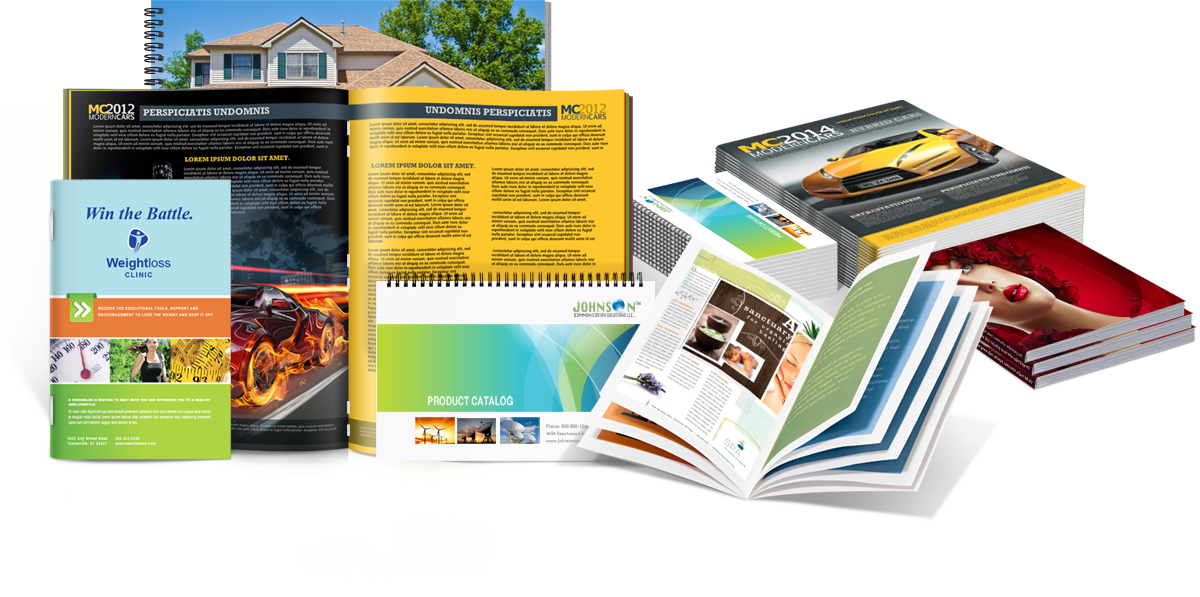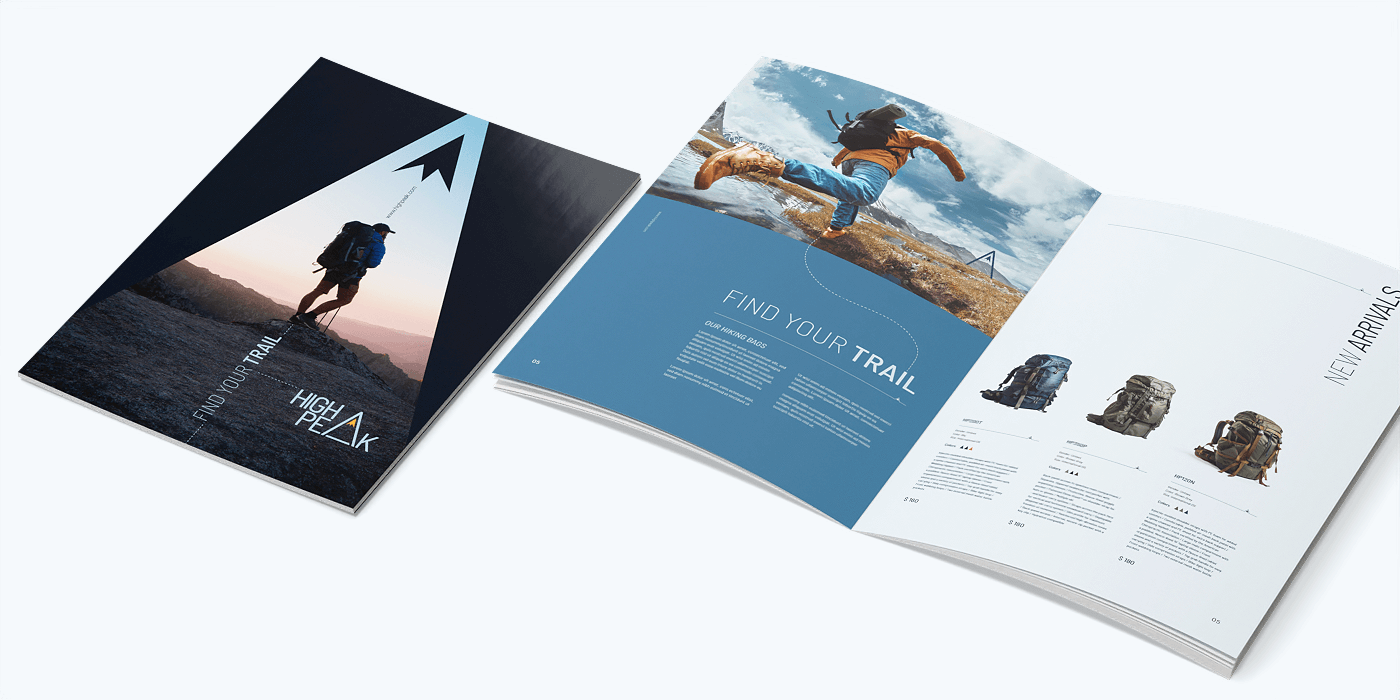Creative Finishing Techniques That Elevate Your Booklet Printing Results
Creative Finishing Techniques That Elevate Your Booklet Printing Results
Blog Article
The Necessary Overview to Recognizing Booklet Printing Options and Techniques
The procedure of brochure printing involves several factors to consider that can substantially impact the end product. From picking the suitable format and dimension to recognizing the nuances of binding approaches, each selection plays an essential role. In addition, variables such as paper supply and printing strategies more affect the performance of the brochure. As one browses these alternatives, it comes to be important to realize exactly how they adjoin and what that suggests for the general outcome.
Understanding Booklet Formats and Dimensions
When considering brochure printing, recognizing the various styles and sizes readily available is important for accomplishing the desired presentation. Brochures can be created in various styles, including saddle-stitched, spiral-bound, and perfect-bound, each offering unique benefits. Typical dimensions range from common letter (8.5 x 11 inches) to smaller options like A5 (5.8 x 8.3 inches), permitting adaptability based on material and target audience.Selecting the suitable size can influence both the design and reader involvement. Larger dimensions could match aesthetically driven material, while smaller sized layouts might be a lot more portable and easy to use. Furthermore, the number of pages influences the choice of binding method, as thicker booklets may call for tougher bindings. Eventually, recognizing these elements permits an extra customized approach, guaranteeing that the final product straightens with the intended message and aesthetic, enhancing the general performance of the interaction.
Choosing the Right Paper Stock

Binding Approaches: Factors To Consider and choices
When it involves binding techniques for booklets, several alternatives are available, each with distinct advantages. Saddle stitch binding provides a cost-effective service for thinner brochures, while excellent binding techniques offer an even more polished seek thicker publications. Wire-O binding stands apart for its toughness and ease of usage, making it ideal for documents that require flexibility.
Saddle Stitch Binding
Saddle stitch binding provides a practical and economical remedy for putting together booklets, making it a prominent option amongst businesses and authors. This binding method involves folding sheets of paper in fifty percent and stapling them along the fold line, developing a cool and orderly appearance. Usually appropriate for booklets with a reduced page count, saddle sewing is excellent for publications, pamphlets, and instructional products. The simpleness of this technique enables quick production and is usually favored for advertising things or brief runs. It is necessary to keep in mind that saddle stitch binding might not be suitable for thicker booklets, as the back might not hold up under raised weight. Overall, it continues to be a reputable option for several printing jobs.
Perfect Binding Techniques
Perfect binding is an extensively used method that offers a expert and sleek finish to publications and brochures. This method involves gluing the web pages together at the spine making use of a strong adhesive, permitting for a clean edge and the capacity to hold a larger variety of pages compared to saddle sewing. Perfect binding is particularly appropriate for thicker booklets, such as magazines and annual reports, where a tough, flat spinal column is preferred. Additionally, it uses the alternative for a printed cover that can be made to enhance aesthetic allure. Considerations such as page count, paper weight, and the meant usage of the pamphlet ought to be taken right into account, as they can impact sturdiness and overall quality.
Wire-O Binding Alternatives
Wire-O binding, understood for its durability and flexibility, supplies an outstanding choice for brochures that need easy page turning and a professional appearance. This binding method employs a collection of steel loops that hold pages securely, allowing them to lie level when open. It is particularly suitable for magazines, presentations, and handbooks due to its durable nature. Wire-O binding is readily available in different colors and diameters, suiting various web page matters and densities. In addition, it allows the incorporation of tabs and covers, boosting the booklet's overall aesthetic. Factors to consider for Wire-O binding include the selection of wire color, the size of the loops, and the degree of modification preferred, all of which can exceptionally affect the end product's appearance and functionality.
Digital vs. Offset Printing: Which Is Best for You?
When selecting a printing approach for brochures, recognizing the distinctions in between digital and balance out printing is essential. Digital printing uses find this modern innovation to produce high-grade prints promptly and economically, making it perfect for brief runs or projects calling for quick turnaround times. It enables personalization, giving the capability to publish on-demand with minimal waste.In comparison, offset printing is a typical technique that succeeds in producing huge amounts with regular high quality. It entails transferring ink from a plate to a rubber covering, after that to the paper, which leads to lively shades and accurate information. Nonetheless, offset printing commonly requires longer arrangement times and is a lot more cost-effective for larger volumes.Ultimately, the selection in between digital and counter printing depends upon task requirements, budget plan, and preferred amount. For little, time-sensitive jobs, electronic may be the ideal choice, while balanced out may be better for bigger, top quality manufacturings.

Creating Your Pamphlet: Tips and Best Practices
When creating a booklet, careful attention to design, font style selection, and color usage can considerably improve its performance. A well-structured design guides the viewers's eye, while proper font styles assure readability and share the wanted tone. Furthermore, efficient use of color can stimulate feelings and highlight vital info, making the overall layout more impactful.
Picking the Right Design
Just how can one successfully select the right layout for a brochure? First, it is necessary to review the brochure's objective and target market. A tidy, organized design improves readability and engagement. Making use of a grid system can help in straightening aspects continually, creating a professional look. In addition, incorporating aesthetic hierarchy through varying sizes and positionings of images and message can guide the visitor's eye and emphasize crucial details. It is likewise essential to leave sufficient white area, which prevents congestion and permits for better emphasis. Examining different layouts through mock-ups can offer insight into how the layout does in real-world circumstances, ensuring that the last product meets both aesthetic and functional demands. Useful Picking Appropriate Fonts
A well-chosen font can considerably improve the general layout of a pamphlet, enhancing the format and strengthening the material's message. The choice of font styles must take into consideration readability, especially for body message, as it ensures the details comes to all viewers. Sans-serif typefaces are commonly preferred for electronic formats, while serif fonts can offer a standard feeling in printed materials. It's suggested to restrict font selections to 2 or three to keep aesthetic coherence. Additionally, font dimension plays a vital function; headings must be distinctive yet not overwhelming, while body message ought to be comfy for analysis. When choosing fonts, positioning with the booklet's theme and target audience is necessary for effective communication and visual allure.
Reliable Use of Color
Shade works as an effective device in pamphlet style, guiding and forming understandings viewers feelings. It can stimulate sensations of calmness, count on, or exhilaration, depending on the tones selected. Developers must take into consideration color theory principles, ensuring that the picked palette straightens with the brochure's message and target audience. Utilizing cozy shades like red and orange can produce seriousness, article while cooler tones like environment-friendly and blue foster tranquility.Additionally, contrast plays a crucial duty; corresponding shades can boost readability and aesthetic allure. Consistency in shade use across pages even more enhances brand identity and cohesion. Ultimately, effective color implementation not only captures attention but also reinforces the brochure's function, making it an important aspect of successful layout.
Finishing Touches: Coatings and Special Impacts
While numerous consider the content and format of a pamphlet the most crucial elements, the finishing touches, such as coverings and unique results, play a necessary duty in enhancing its total allure. Coatings can supply protection and resilience, guaranteeing that the pamphlet holds up against damage. Matte finishes offer an innovative, non-reflective surface, while shiny coatings can make colors show up even more captivating and lively. Unique results, like embossing or aluminum foil stamping, add a responsive measurement that can produce a memorable impact. These strategies can highlight certain areas, drawing focus to crucial details or developing visual interest. In addition, UV layer can provide a high-shine surface that elevates the overall look.Together, these ending up touches not only boost the booklet's visual but likewise communicate professionalism and trust and focus to detail, inevitably leaving a long lasting influence on the reader.
Expense Considerations for Brochure Printing
Recognizing the various expense factors to consider for booklet printing is crucial for organizations and companies intending to maximize their budgets. Secret factors influencing expenses consist of the selection of binding, ink, and paper methods. Greater quality materials, such as superior paper or specialized inks, commonly increase the overall cost. In addition, the dimension and article source web page matter of the booklet play a considerable function; larger booklets need even more sources and time to produce.Another crucial factor to consider is the printing strategy, whether electronic or countered, as each has its own pricing structure and suitability for different quantities. Businesses should also factor in layout costs, which can differ based upon complexity and the use of professional services. Inevitably, delivery and handling charges can include in the overall, particularly for big orders. By examining these aspects, organizations can make informed choices that line up with their monetary abilities while accomplishing the desired quality in their published products.
Often Asked Concerns
What Are the Environmental Impacts of Pamphlet Printing?
The ecological effects of brochure printing include deforestation from paper manufacturing, carbon discharges from transportation, and waste generation from discarded materials - Booklet Printing. Lasting techniques, such as utilizing recycled paper and environment-friendly inks, can reduce these effects
Just How Can I Make Sure Shade Accuracy in My Pamphlet?
To ensure color precision in a brochure, one should use calibrated monitors, use expert shade profiles, conduct examination prints, and choose top notch printing services that supply color matching and proofing options for finest results.
What Is the Regular Turn-around Time for Booklet Printing?
The normal turnaround time for brochure printing varies depending upon the complexity and amount - Booklet Printing. Typically, it varies from a few days to 2 weeks, influenced by aspects such as printing techniques and finishing needs
Are There Minimum Order Quantities for Brochure Printing?

Can I Print Pamphlets in Numerous Languages?
Printing booklets in numerous languages is possible. Numerous printing services supply options for bilingual or multilingual designs, permitting for reliable interaction. Careful planning assurances that develop elements accommodate various languages without compromising readability or appearances. Furthermore, variables such as paper supply and printing strategies more affect the performance of the brochure. When considering brochure printing, comprehending the various formats and sizes available is vital for accomplishing the desired discussion. When picking a printing method for booklets, comprehending the distinctions in between electronic and offset printing is essential. Furthermore, the size and page count of the pamphlet play a considerable role; larger pamphlets need even more sources and time to produce.Another important factor to consider is the printing technique, whether electronic or balanced out, as each has its own rates framework and viability for different amounts. The ecological impacts of pamphlet printing consist of deforestation from paper production, carbon exhausts from transportation, and waste generation from discarded products.
Report this page